Volume 10 | Number 2 | November 2021
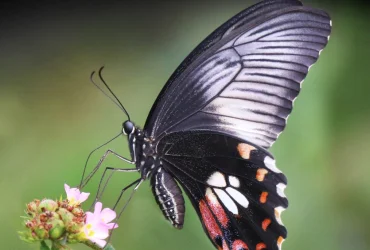 v10i2.265
v10i2.265ISSN: 1800-427X (printed)
eISSN: 1800-427X (online)
DOI:10.47605/tapro.v10i2.265
Submitted date: 22 September 2021
Accepted date: 15 November 2021
Published date: 22 November 2021
Pp. 132, pl. 30.
On the occurance of crowned river turtle, Hardella thurjii in Gujarat, India
Raju Vyas & Harshil Patel*
*E-mail: harshilpatel121@gmail.com
The crowned river turtle, Hardella thurjii (Gray, 1831) is widely distributed from Pakistan to Bangladesh, and possibly in western Myanmar. It prefers the middle and lower reaches of the northern river systems on the Indian subcontinent, comprising the Indus, Ganga, Brahmaputra, and their tributaries. The species is classified as Endangered, but nationally remains a poorly protected species under the Indian Wildlife Protection Act. This communication presents the first photographic evidence of the crowned river turtle, from Gujarat State, India. It was previously reported from North Gujarat two decades ago, but without any evidence.
Section Editor: Thasun Amarasinghe
eISSN: 1800-427X (online)
DOI:10.47605/tapro.v10i2.265
Submitted date: 22 September 2021
Accepted date: 15 November 2021
Published date: 22 November 2021
Pp. 132, pl. 30.
On the occurance of crowned river turtle, Hardella thurjii in Gujarat, India
Raju Vyas & Harshil Patel*
*E-mail: harshilpatel121@gmail.com
The crowned river turtle, Hardella thurjii (Gray, 1831) is widely distributed from Pakistan to Bangladesh, and possibly in western Myanmar. It prefers the middle and lower reaches of the northern river systems on the Indian subcontinent, comprising the Indus, Ganga, Brahmaputra, and their tributaries. The species is classified as Endangered, but nationally remains a poorly protected species under the Indian Wildlife Protection Act. This communication presents the first photographic evidence of the crowned river turtle, from Gujarat State, India. It was previously reported from North Gujarat two decades ago, but without any evidence.
Section Editor: Thasun Amarasinghe
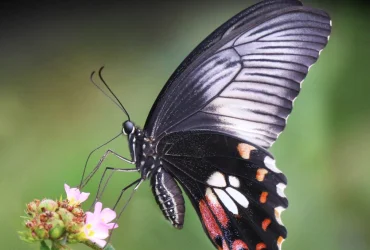 v10i2.264
v10i2.264ISSN: 1800-427X (printed)
eISSN: 1800-427X (online)
DOI:10.47605/tapro.v10i2.264
Submitted date: 30 May 2021
Accepted date: 9 September 2021
Published date: 22 November 2021
Pp. 131, pl. 29.
Chromatic leucism in the flap shell turtle, Lissemys punctata from Bangladesh
M.F. Rabbe*, M.M. Alam, M.F. Jaman, M.S. Hossain, K.N.M. Sarafat & A.R. Shome
*E-mail: fazlerabbedu@gmail.com
The spotted flap shell turtle, Lissemys punctata (Bonnaterre, 1789) has a distribution in Bangladesh, India, Myanmar, Nepal and Pakistan. In Bangladesh, this species is widely distributed throughout the freshwater wetlands and the low-lying floodplains, coastal islands, and hill districts. This species is listed in CITES (Appendix II) and protected by Bangladesh Wildlife Conservation & Security Act 2012 (Schedule II), where commercial trade is strictly prohibited. Lissemys punctata has an oval and domed carapace with olive-green colour spotted by dark yellow blotches. The head is also olive green often with yellow blotches, whereas the plastron is whitish or pale yellow. The colour of this species may vary depending on its habitat and defence strategy. Colour aberration in animals may occur due to a lack of melanin. Golden yellow colour aberration (chromatic leucism) is rare in animals, especially in turtles. This might be because of the absence of melanin in the outer dermis. The presence of high xanthophores and yellow pteridine pigments in the skin are also responsible for the golden yellow colour aberration.
Section Editor: Phil Bowles
eISSN: 1800-427X (online)
DOI:10.47605/tapro.v10i2.264
Submitted date: 30 May 2021
Accepted date: 9 September 2021
Published date: 22 November 2021
Pp. 131, pl. 29.
Chromatic leucism in the flap shell turtle, Lissemys punctata from Bangladesh
M.F. Rabbe*, M.M. Alam, M.F. Jaman, M.S. Hossain, K.N.M. Sarafat & A.R. Shome
*E-mail: fazlerabbedu@gmail.com
The spotted flap shell turtle, Lissemys punctata (Bonnaterre, 1789) has a distribution in Bangladesh, India, Myanmar, Nepal and Pakistan. In Bangladesh, this species is widely distributed throughout the freshwater wetlands and the low-lying floodplains, coastal islands, and hill districts. This species is listed in CITES (Appendix II) and protected by Bangladesh Wildlife Conservation & Security Act 2012 (Schedule II), where commercial trade is strictly prohibited. Lissemys punctata has an oval and domed carapace with olive-green colour spotted by dark yellow blotches. The head is also olive green often with yellow blotches, whereas the plastron is whitish or pale yellow. The colour of this species may vary depending on its habitat and defence strategy. Colour aberration in animals may occur due to a lack of melanin. Golden yellow colour aberration (chromatic leucism) is rare in animals, especially in turtles. This might be because of the absence of melanin in the outer dermis. The presence of high xanthophores and yellow pteridine pigments in the skin are also responsible for the golden yellow colour aberration.
Section Editor: Phil Bowles
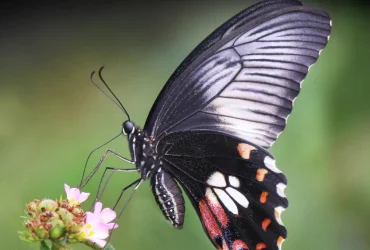 v10i2.263
v10i2.263ISSN: 1800-427X (printed)
eISSN: 1800-427X (online)
DOI:10.47605/tapro.v10i2.263
Submitted date: 1 August 2021
Accepted date: 26 October 2021
Published date: 22 November 2021
Pp. 128–130
Copulatory behavior of Knuckles pygmy lizard (Cophotis dumbara)
H.D.C. Soysa*, U.S.B. Hettige, M.G. Cooray & D.R. Vidanapathirane
*E-mail: hdcsoysa@mail.com
Nearly one in every five species of reptiles in the world is threatened with extinction and thus is conservation dependent. In order to develop effective and targeted species conservation strategies, detailed information on their distribution, systematics and ecology are necessary. Information such as the natural history and in-situ reproductive behaviors would be crucial for highly threatened species that require ex-situ conservation measures. Agamid lizards are a major component of the global reptile diversity and a significant number are threatened due to habitat loss and other threats such as smuggling.
Section Editor: Thasun Amarasinghe
eISSN: 1800-427X (online)
DOI:10.47605/tapro.v10i2.263
Submitted date: 1 August 2021
Accepted date: 26 October 2021
Published date: 22 November 2021
Pp. 128–130
Copulatory behavior of Knuckles pygmy lizard (Cophotis dumbara)
H.D.C. Soysa*, U.S.B. Hettige, M.G. Cooray & D.R. Vidanapathirane
*E-mail: hdcsoysa@mail.com
Nearly one in every five species of reptiles in the world is threatened with extinction and thus is conservation dependent. In order to develop effective and targeted species conservation strategies, detailed information on their distribution, systematics and ecology are necessary. Information such as the natural history and in-situ reproductive behaviors would be crucial for highly threatened species that require ex-situ conservation measures. Agamid lizards are a major component of the global reptile diversity and a significant number are threatened due to habitat loss and other threats such as smuggling.
Section Editor: Thasun Amarasinghe
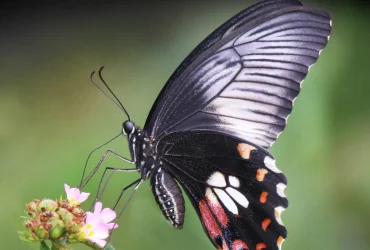 v10i2.262
v10i2.262ISSN: 1800-427X (printed)
eISSN: 1800-427X (online)
DOI:10.47605/tapro.v10i2.262
Submitted date: 20 June 2021
Accepted date: 10 September 2021
Published date: 22 November 2021
Pp. 127, pl. 28.
Ophiophagy by banded krait (Bungarus fasciatus) exposed by a road kill
L. Biakzuala, Malsawmtluanga & H.T. Lalremsanga*
*E-mail: htlrsa@yahoo.co.in
Bungarus fasciatus (Schneider, 1801) is a nocturnal, large bodied krait species, widely distributed throughout South and Southeast Asia. It is found at a variety of habitats with relatively large home ranges. The ophiophagous diet of this venomous snake comprises a broad spectrum of prey items, even including its congener B. caeruleus. It also preys on skinks, fish, frogs, and eggs of snakes. On 16 June 2021, at 2105 h, a fresh road-kill of an adult male B. fasciatus (total length 1.46 m) was observed on a newly constructed tarmac road (width of road ~6 m) at New Khawlek (23°19'16.00"N, 92°38'36.95"E; alt. 715 m a.s.l.), Lunglei District, Mizoram, India. It seems the krait remained vulnerably exposed on the motorway while consuming a redtail pit-viper, Trimeresurus erythrurus (Cantor, 1839) (total length 48.8 cm), and was fatally run over while busy swallowing more than half of the length of its prey, most probably a few minutes prior to our arrival at the site.
Section Editor: Gernot Vogel
eISSN: 1800-427X (online)
DOI:10.47605/tapro.v10i2.262
Submitted date: 20 June 2021
Accepted date: 10 September 2021
Published date: 22 November 2021
Pp. 127, pl. 28.
Ophiophagy by banded krait (Bungarus fasciatus) exposed by a road kill
L. Biakzuala, Malsawmtluanga & H.T. Lalremsanga*
*E-mail: htlrsa@yahoo.co.in
Bungarus fasciatus (Schneider, 1801) is a nocturnal, large bodied krait species, widely distributed throughout South and Southeast Asia. It is found at a variety of habitats with relatively large home ranges. The ophiophagous diet of this venomous snake comprises a broad spectrum of prey items, even including its congener B. caeruleus. It also preys on skinks, fish, frogs, and eggs of snakes. On 16 June 2021, at 2105 h, a fresh road-kill of an adult male B. fasciatus (total length 1.46 m) was observed on a newly constructed tarmac road (width of road ~6 m) at New Khawlek (23°19'16.00"N, 92°38'36.95"E; alt. 715 m a.s.l.), Lunglei District, Mizoram, India. It seems the krait remained vulnerably exposed on the motorway while consuming a redtail pit-viper, Trimeresurus erythrurus (Cantor, 1839) (total length 48.8 cm), and was fatally run over while busy swallowing more than half of the length of its prey, most probably a few minutes prior to our arrival at the site.
Section Editor: Gernot Vogel
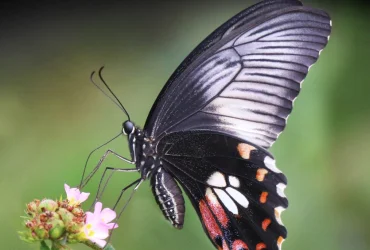 v10i2.261
v10i2.261ISSN: 1800-427X (printed)
eISSN: 1800-427X (online)
DOI:10.47605/tapro.v10i2.261
Submitted date: 8 June 2021
Accepted date: 26 October 2021
Published date: 22 November 2021
Pp. 126
An unusual body colouration of Ceylon roughside snake (Aspidura ceylonensis)
D. Kandambi, N. Abeyrathna, D.S. De Silva & S. Karunarathna*
*E-mail: suranjan.karu@gmail.com
The small sized, non-venomous, and fossorial colubrid snake genus Aspidura Wagler, 1830 is endemic to Sri Lanka. Aspidura ceylonensis (Günther, 1858) is rare and restricted to mid-elevation to montane and sub-montane forests at elevation of 500–1300 m a.s.l. in the Central Highlands and the Knuckles massif. It is found in cool and well-shaded forest areas, with thick moist leaflitter, woody debris, and loose soil. The usual adult body coloration on dorsum is dark reddish or dark orange, rarely yellowish, with a continuous black vertebral line and two rows of dorsolateral black spots along the body.
Section Editor: Thasun Amarasinghe
eISSN: 1800-427X (online)
DOI:10.47605/tapro.v10i2.261
Submitted date: 8 June 2021
Accepted date: 26 October 2021
Published date: 22 November 2021
Pp. 126
An unusual body colouration of Ceylon roughside snake (Aspidura ceylonensis)
D. Kandambi, N. Abeyrathna, D.S. De Silva & S. Karunarathna*
*E-mail: suranjan.karu@gmail.com
The small sized, non-venomous, and fossorial colubrid snake genus Aspidura Wagler, 1830 is endemic to Sri Lanka. Aspidura ceylonensis (Günther, 1858) is rare and restricted to mid-elevation to montane and sub-montane forests at elevation of 500–1300 m a.s.l. in the Central Highlands and the Knuckles massif. It is found in cool and well-shaded forest areas, with thick moist leaflitter, woody debris, and loose soil. The usual adult body coloration on dorsum is dark reddish or dark orange, rarely yellowish, with a continuous black vertebral line and two rows of dorsolateral black spots along the body.
Section Editor: Thasun Amarasinghe
Hubungi Kami
The ultimate aim of the journal is to provide an effective medium for communication of the latest and best scientific information.
Copyright © 2020 Taprobanica. All Rights Reserved
Jasa Pembuatan Website by IKT




